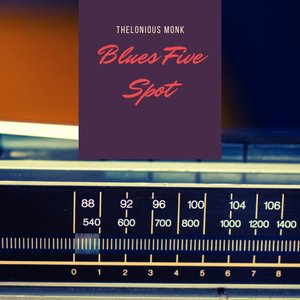

In that combo, featuring the earthy yet always game Charlie Rouse on tenor sax and the lively drummer Frankie Dunlop, Monk had found a suitable match for his demanding compositions and oddball improvisations.
THELONIOUS MONK JUST A GIGOLO FULL
Instead, he focused on presenting his music and on the rapport of his working quartet, which had been a unit for two full years when he brought them to record his exemplary Columbia debut in the fall of 1962. By the time he jumped to the jazz big leagues, Columbia Records in the early 1960s, he’d established himself as one of bop’s great composers, but his songwriting pace had slowed. Monk's unique contribution to music, and "Monks Dream" itself, is founded on these motifs, which purely expressed his madcap, avuncular presence and which he would never attempt to expand upon again after this record.Monk’s unique compositional genius flowered in the 1940s and early 1950s, but his improvisational peak came later.

Blanging, wide, not-quite-dissonant chord interjections, as if a chord were some exotic beetle to be turned over just long enough to see how many legs it had before throwing it down. Then, Thelonious himself aching, spring-day romanticism of fleeting substitutions in ballads. Straight-up blues underpins almost all pointedly amateurish technique regularly recalls original model James P.
.webm/220px-seek%3D216-Just_a_Gigolo_(1932).webm.jpg)
Listening now to Monk parley "Body & Soul", "Just a Gigolo" or "Sweet & Lovely", it almost seems funny he was considered a radical modernist. The magic works best on devilish riff-fest "Bye-Ya". Lately, intuitive bassist John Ore, deceptively loose-sounding drummer Frankie Dunlop and equal parts funky and angular tenor man Charlie Rouse had hung tough over months of club dates, and their broken-in sympatico thwacks all the often chestnutty tunes of "Monk's Dream" bang in the centre pocket.
THELONIOUS MONK JUST A GIGOLO SERIAL
Monk's skew-wiff timing and harmony saddled him with a serial hanging-on-to-sidemen snafu. Entering the studio for his first Columbia session, it's tempting to wonder if Monk found irony in recollections of the composition lessons that he'd once given to now all-conquering new labelmate Miles Davis when they were alchemists together at the crucible of long-gone bebop. Its beginning can be traced roughly to this album, here reissued with 27 minutes of alternate takes. Approbation flowered too late to prevent his questioning the sense of working so hard in the face of scant recognition, and so the latter stage of his career commenced. But the iconoclastic fire that forged his legacy of innovation had infrequently risen above a steadily glowing ember since the 40s, when works like "Mysterioso", "Round Midnight" and "In Walked Bud" had struck like weird electric cattle prods at the spine of a bewildered musical establishment.īy 1962 Monk had spent twenty years not so much ahead of the curve of jazz as at angles to it. His 50's albums for Prestige were great by ordinary standards, displaying flashes of his compositional genius. Still, Monk remained an inimitable pianist. In 1958, Thelonious Monk's appearance at the Newport Festival finally alerted a world beyond the demi-monde of beatniks and jazz cognoscenti to his unique abilities.


 0 kommentar(er)
0 kommentar(er)
